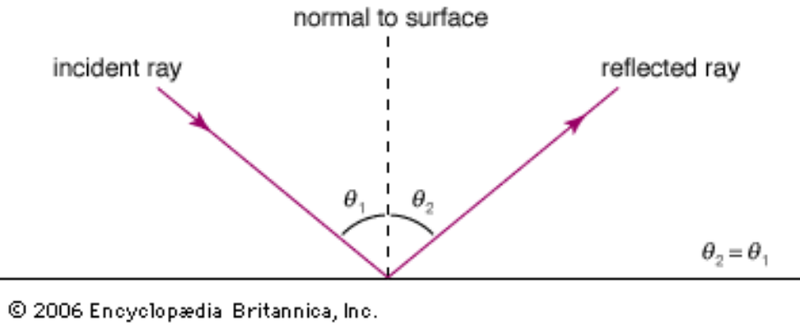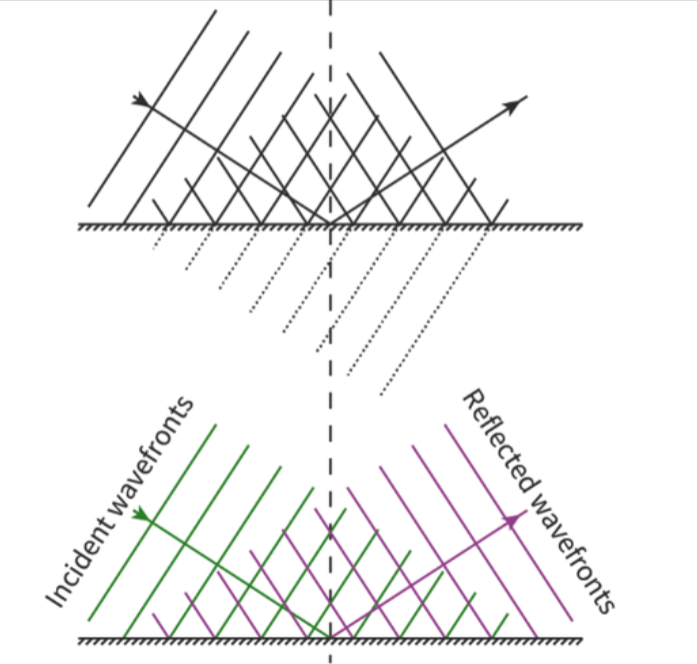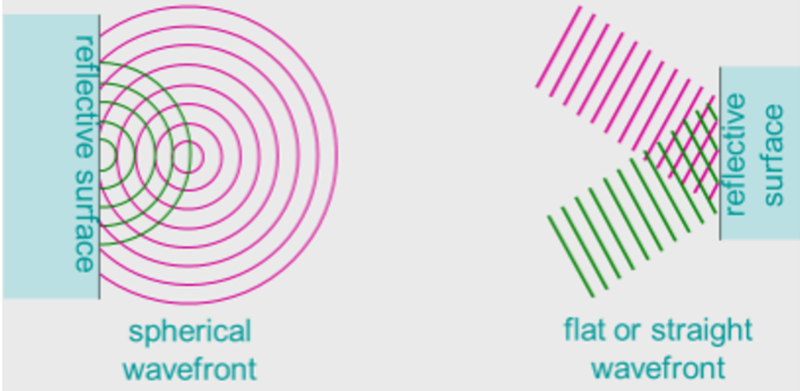What is Reflection?
- Reflection is when a wave comes into contact with a different medium, and instead of being transmitted or absorbed, it "bounces off" and continues in a different direction through the initial medium.
- Reflection is most easily noticeable for light, and it is what allows mirrors to reflect images back at us.
- While generally the wave is only partially diverted and some of it is transmitted through the medium or absorbed, in most cases it can be assumed the whole wave is reflected for simplicity.

- The initial ray of the wave is called the "incident ray".
- The angle it forms between the normal to the reflected surface is called the angle of incidence, θincident, or for simplicity, θᵢ.
- The ray of the reflected wave is called the "reflected ray".
- The angle it forms with the normal to the reflected surface is called the angle of reflection, θreflection, or just θᵣ .
- For all reflection, the angle of incidence is equal to the angel of reflection.
θᵢ = θᵣ
- Additionally, wavelength and frequency, and therefore wave speed do not change during deflection.
Reflection Diagrams
- Rays are most easily used to communicate reflection.
- However, wavefronts can also be shown, in which case their angle changes similar to rays.

- While straight wavefronts are quite straightforward, (pun not intended), circular wavefronts are more complicated.

Sources
https://www.britannica.com/science/light/Reflection-and-refraction